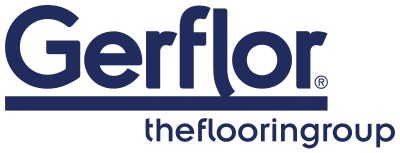IT governance, also referred to as Information Systems (IS) governance, represents a critical challenge for any organization looking to master its technological ecosystem. As perfectly illustrated in the diagram presented, IT governance revolves around four fundamental pillars: strategic alignment, value creation, resource management, and risk management.
In a world where digital transformation is accelerating, with 60% of companies considering their information systems as strategic according to a CIGREF study, understanding and implementing effective IT governance is no longer optional but essential. As information systems have become the nervous system of organizations, their proper functioning, security, and alignment with business objectives are crucial. This complex subject deserves special attention, as the stakes for the sustainability and competitiveness of businesses are considerable.
IT Governance versus IT Management: What’s the Difference?
Before going further, it’s essential to clearly distinguish between IT governance and simple IT management. These two concepts are often confused but respond to distinct logics.
IT governance is driven by the goal of supporting the long-term success and growth of the company. It establishes a formal framework aimed at developing information technologies in accordance with the organization’s overall objectives. It is generally led by a strategic committee involving general management, the CIO, and business unit directors.
IT management, on the other hand, focuses on day-to-day operational aspects: it ensures the smooth running of activities and immediate technical processes. In other words, governance defines the “why” and the “what,” while management takes care of the “how.”
According to CEGSI, “information systems represent 15 to 20% of companies’ revenues, or approximately 50% of the generated added value.” This economic reality fully justifies the importance of dedicated governance that extends beyond the simple framework of operational management.
IT Governance Frameworks: COBIT, ITIL, and Other Structuring Models
To implement effective IT governance, organizations rely on internationally recognized frameworks that offer proven best practices. The two main ones are COBIT (Control Objectives for Information and Related Technologies) and ITIL (Information Technology Infrastructure Library).
COBIT, developed by ISACA, offers a comprehensive framework that focuses on the control and governance of IT. It aligns IT objectives with business objectives through five fundamental principles: considering stakeholders, covering the enterprise end-to-end, applying an integrated reference framework, adopting a holistic approach, and separating governance from management. COBIT is particularly suited to organizations subject to strict regulatory requirements (financial sector, healthcare).
ITIL, now managed by Axelos, offers a service-oriented approach that standardizes IT service management processes. While ITIL was not initially designed for governance, its latest version (ITIL 4) integrates governance elements by adapting to new technologies like AI and cloud computing. ITIL is particularly recommended for optimizing the quality of IT services and improving user satisfaction.
Other frameworks exist, such as CMMI (Capability Maturity Model Integration), which evaluates the maturity of IT processes, or the ISO/IEC 38500 standard, specifically dedicated to information technology governance. The choice of framework will depend on the specifics of the organization, its digital maturity, and its regulatory constraints.
Strategic Alignment: The Foundation of IT Governance
Strategic alignment, the first pillar identified in our diagram, represents the organization’s ability to converge its business objectives and IT strategy. A poorly aligned IT system can generate significant operational efficiency losses. Concretely, this implies that any decision concerning information systems must be made in coherence with the company’s overall strategy.
The establishment of governance committees including both business leaders and IT managers becomes essential. These decision-making bodies allow for arbitrating IT investments based on their contribution to strategic objectives.
Alignment also requires a clear mapping of business processes and the applications that support them. This global vision makes it possible to identify redundancies, gaps, and optimization opportunities. Regulations also play an important role: the Sarbanes-Oxley Act for companies listed in the United States or GDPR in Europe impose transparency and traceability constraints that reinforce the need for perfect alignment between IT and business strategy.
Value Creation: Transforming IT into a Performance Lever
The second essential pillar transforms the IT department from a cost center into a genuine value generator for the organization. This axis involves the implementation of metrics and key performance indicators (KPIs) to objectively evaluate the contribution of IT to the company’s results.
IT governance must therefore integrate processes for continuous evaluation of the return on investment of IT projects, while ensuring technological innovation that can create new competitive advantages. Agile methodologies make perfect sense here, allowing for the rapid delivery of high-value features while adapting to market developments.
The concept of “Time to Market” becomes crucial: an efficient IT system allows for faster launching of new products or services. The digitalization of business processes is also a major lever for value creation, improving customer experience and optimizing internal operations, thus directly contributing to the overall performance of the organization.
Resource Management : Optimizing to Excel
Resource management, the third component of our model, encompasses all human, technical, and financial resources dedicated to the information system. This dimension is particularly strategic in a context where IT budgets represent a growing share of company investments.
Effective IT governance requires rigorous planning of IT investments, aligned with the company’s budget cycles and strategic priorities. IT skills management is also a major challenge in a context of high tension in the technology talent market in the United States, according to market analyses.
Sourcing decisions (insourcing vs. outsourcing) must be made based on strategic considerations and not solely financial ones. The emergence of cloud computing has profoundly modified IT economic models, shifting from heavy investments (CAPEX) to flexible operational expenses (OPEX). This evolution requires adapted governance, capable of arbitrating between different service models (IaaS, PaaS, SaaS) according to the specific needs of the organization.
Risk Management : Securing the Digital Future
The fourth pillar, risk management, is a major concern at a time when cyber-attacks are growing exponentially. According to the ANSSI (French Information Systems Security Agency) 2023 annual report, the number of reported security incidents has risen significantly in recent years. This dimension of IS governance encompasses the identification, assessment and mitigation of risks linked to information systems.
Beyond the legal framework, a proactive approach to risk management requires the implementation of robust security policies, business continuity plans (BCPs) and disaster recovery plans (DRPs). Data governance also represents a crucial challenge : data classification according to sensitivity, definition of access rules, and traceability of processing. Regular security audits and penetration tests identify vulnerabilities before they are exploited. In the face of increasingly sophisticated threats, artificial intelligence is becoming an invaluable ally in detecting abnormal behavior and responding to security incidents.
Translated with DeepL.com (free version)
Methodology : How to Implement Effective IT Governance
Implementing IT governance requires a methodical and progressive approach that involves all stakeholders in the organization. This approach can be structured into three main stages:
1. Identify objectives and assess current maturity
- Conduct an audit of the existing situation to understand the maturity level of IT governance
- Define the strategic objectives that governance must support
- Identify regulatory constraints specific to the business sector
2. Define an adapted IT governance strategy
- Choose the reference framework (COBIT, ITIL, etc.) best suited to the organization
- Establish the governance structure (committees, responsibilities, decision-making processes)
- Develop a roadmap with clear milestones and performance indicators
3. Deploy tools and processes
- Implement adapted technological solutions (ITSM, PPM, CIO management tools)
- Train teams and support cultural change
- Establish a cycle of continuous improvement based on feedback
To succeed in this approach, it is crucial to adopt a participative approach involving both IT teams and business departments. Numerous studies on change management show that the failure of digital transformation projects is often more linked to human and organizational factors than to purely technical problems. According to Prosci consulting firm, the active involvement of key stakeholders and a solid change management plan are among the main success factors for large-scale projects.
Change management thus becomes a key success factor, requiring communication, training, and support for employees to adopt the new processes and tools. The adoption of effective IT governance represents a profound cultural change that must be supported by strong leadership and a shared vision at all levels of the organization.
IT Governance Challenges Facing Emerging Technologies
Information systems governance must constantly adapt to emerging technologies that are rapidly transforming the digital landscape. Among these, artificial intelligence and particularly generative AI pose major new challenges.
Cloud computing also continues to evolve towards multi-cloud and hybrid architectures, making the supervision and security of data more complex. IT governance must integrate these new dimensions, defining clear policies on which data can migrate to the cloud and which should remain on-premises.
The Internet of Things (IoT) multiplies potential entry points to the network, requiring rethought security approaches. Edge computing shifts data processing closer to its source, modifying traditional paradigms of centralized control. Finally, blockchain introduces new models of distributed trust that can transform validation and traceability processes.
Faced with these innovations, IT governance must become more agile and adaptive while maintaining the fundamental principles of compliance and security.
Conclusion: BHI Consulting’s Expertise for Customized IT Governance
The implementation of effective IT governance represents a considerable challenge that requires specialized expertise and a global vision. The four pillars we have explored – strategic alignment, value creation, resource management, and risk management – form an interdependent system that must be approached holistically. To succeed in this transformation, support from experts becomes indispensable, especially in the face of challenges posed by emerging technologies and constantly evolving regulations.
This is precisely the mission that BHI Consulting has set for itself, a consulting firm specialized in the integration and optimization of management solutions. With its 42 experienced consultants and 200 projects completed since 2010, BHI has unique expertise to accompany you in defining and implementing your IT governance. Our approach combines mastery of frameworks (COBIT, ITIL), methodological expertise, and perfect knowledge of the technological tools that support effective governance.
Whether you are in the phase of implementing a new ERP such as JD Edwards, Oracle eBusiness Suite, or SAP S/4 HANA, or you are looking to optimize your current governance, our teams are available to co-build a solution adapted to your specific challenges. We pay particular attention to the human aspect of transformation, with change management support that guarantees the buy-in of your teams and the sustainability of your governance.
Don’t let IT governance challenges compromise your digital transformation: contact us today to benefit from our expertise and transform your information system into a real lever of performance and value creation for your company.

















